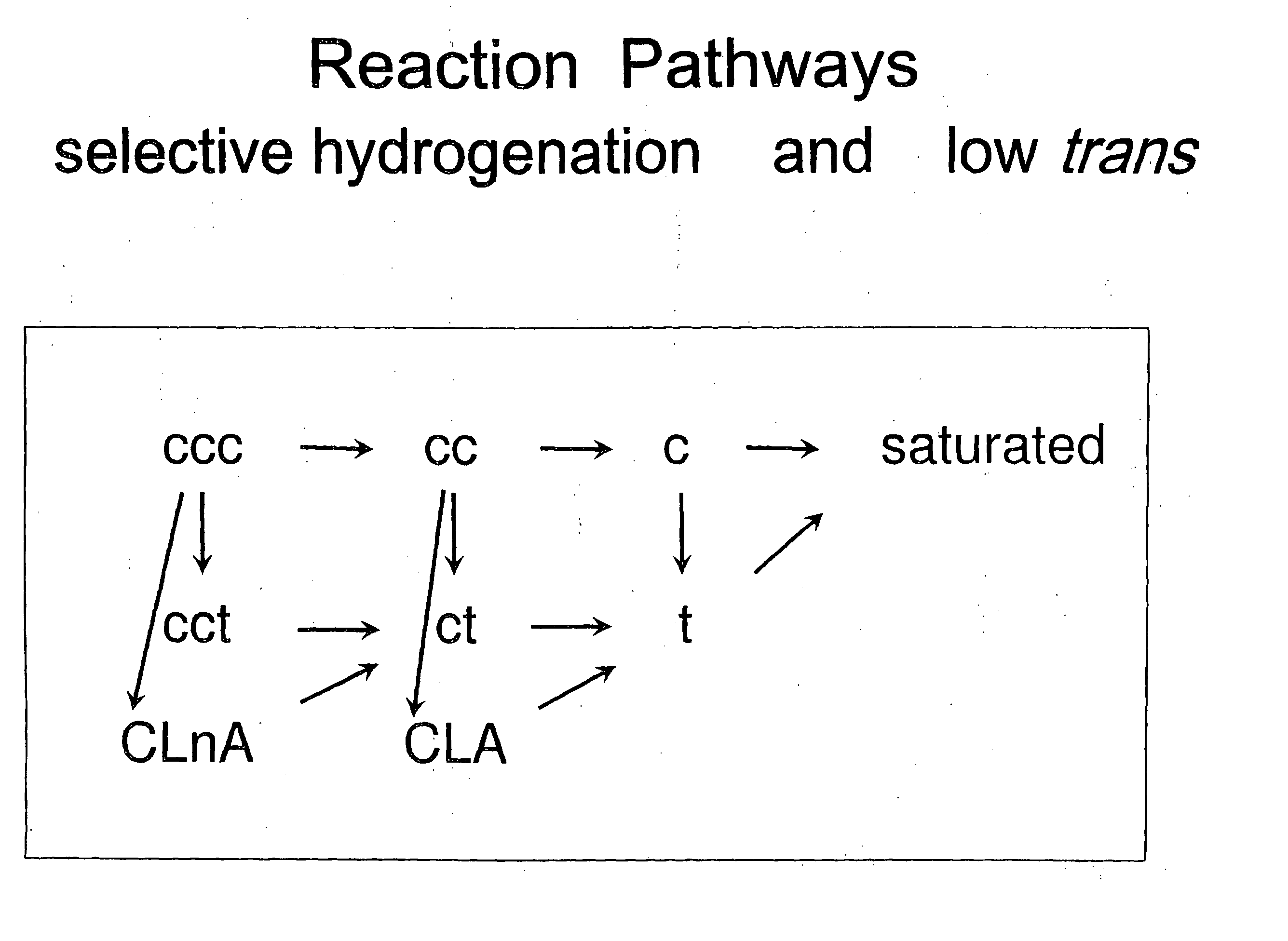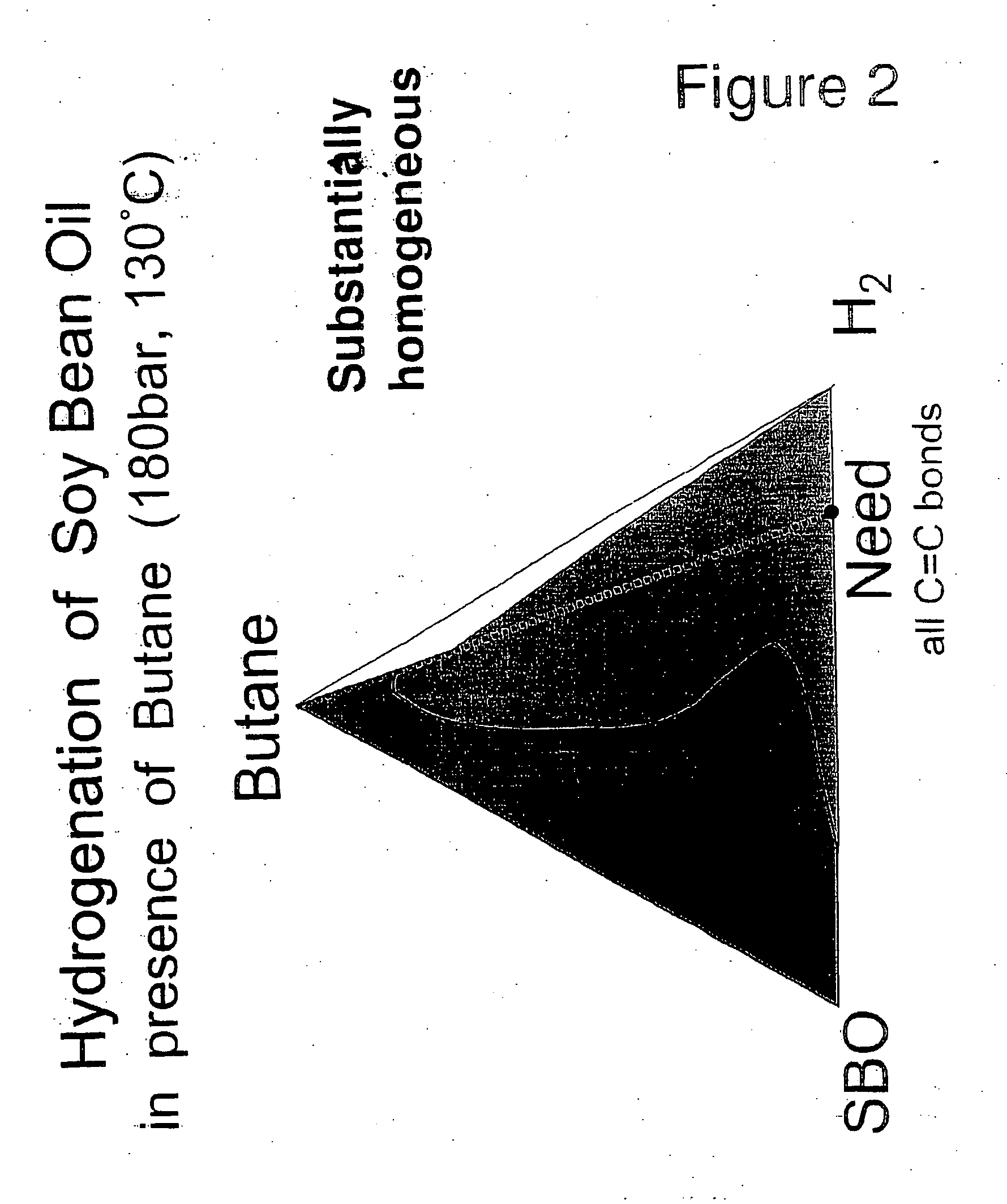Selective hydrogenation of functional groups in substrates and partially hydrogenated fatty acids and fatty acid derivatives
a functional group and hydrogenation technology, applied in the preparation of carboxylic compounds, fatty acid chemical modifications, organic chemistry, etc., can solve the problems of high reaction rate, low mass transport of triglyceride, and extra-hard to obtain selective hydrogenation of the different fatty acids in the molecule, so as to minimise reduce the formation of trans-bonds , the effect of reducing the formation of trans-fatty acids
- Summary
- Abstract
- Description
- Claims
- Application Information
AI Technical Summary
Benefits of technology
Problems solved by technology
Method used
Image
Examples
Embodiment Construction
[0167] The experiments are carried out using the same equipment and in the same way as described in our literature publications (van den Hark et al 1999, Macher 2001, van den Hark 2000).
[0168] Hydrogenation is initiated by adding a known amount of hydrogen to a continuous flow of solvent, dimethylether (DME) or butane, and then adding a flow of substrate (rapeseed oil from the local store). The total system pressure was usually 200 bar. The entire reaction mixture is warmed to the desired temperature and passes through a solid catalyst bed which is warmed to the same temperature.
[0169] Samples are taken at regular intervals from the reactor outlet for triglyceride analysis by HPLC. Under certain chosen periods, a large amount of produce is collected for methylation and analysis of fatty acid composition by HPLC. Both HPLC methods are based on silver ion chromatography. The triglyceride method is described in Macher, 2001 and Macher Holmqvist 2001 and the meth...
PUM
| Property | Measurement | Unit |
|---|---|---|
| reaction temperature | aaaaa | aaaaa |
| reaction temperature | aaaaa | aaaaa |
| reaction temperature | aaaaa | aaaaa |
Abstract
Description
Claims
Application Information
 Login to View More
Login to View More - R&D
- Intellectual Property
- Life Sciences
- Materials
- Tech Scout
- Unparalleled Data Quality
- Higher Quality Content
- 60% Fewer Hallucinations
Browse by: Latest US Patents, China's latest patents, Technical Efficacy Thesaurus, Application Domain, Technology Topic, Popular Technical Reports.
© 2025 PatSnap. All rights reserved.Legal|Privacy policy|Modern Slavery Act Transparency Statement|Sitemap|About US| Contact US: help@patsnap.com



